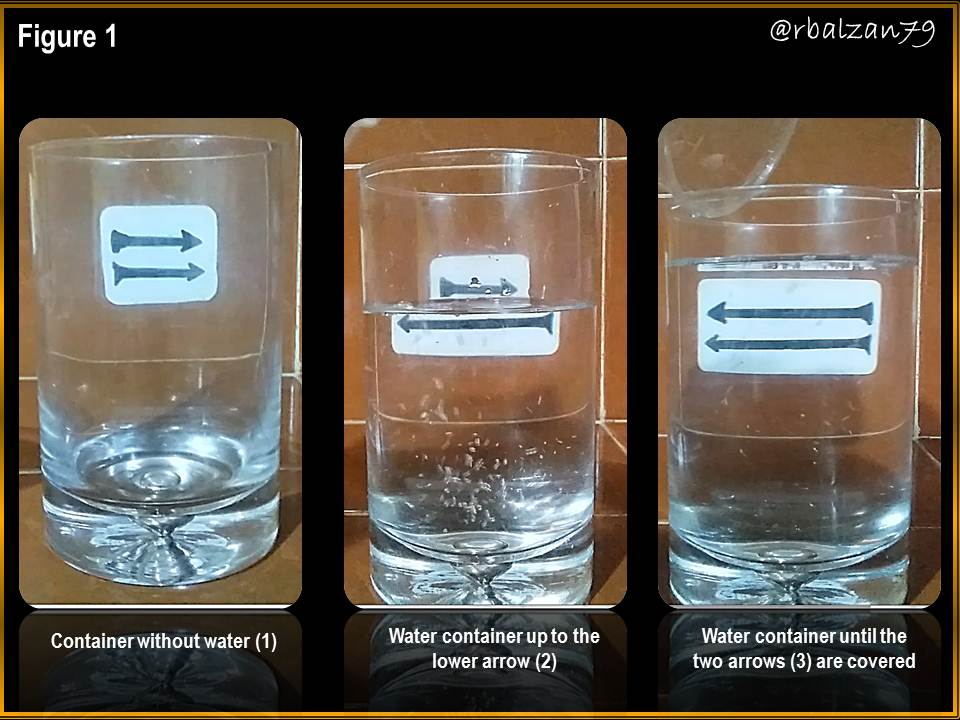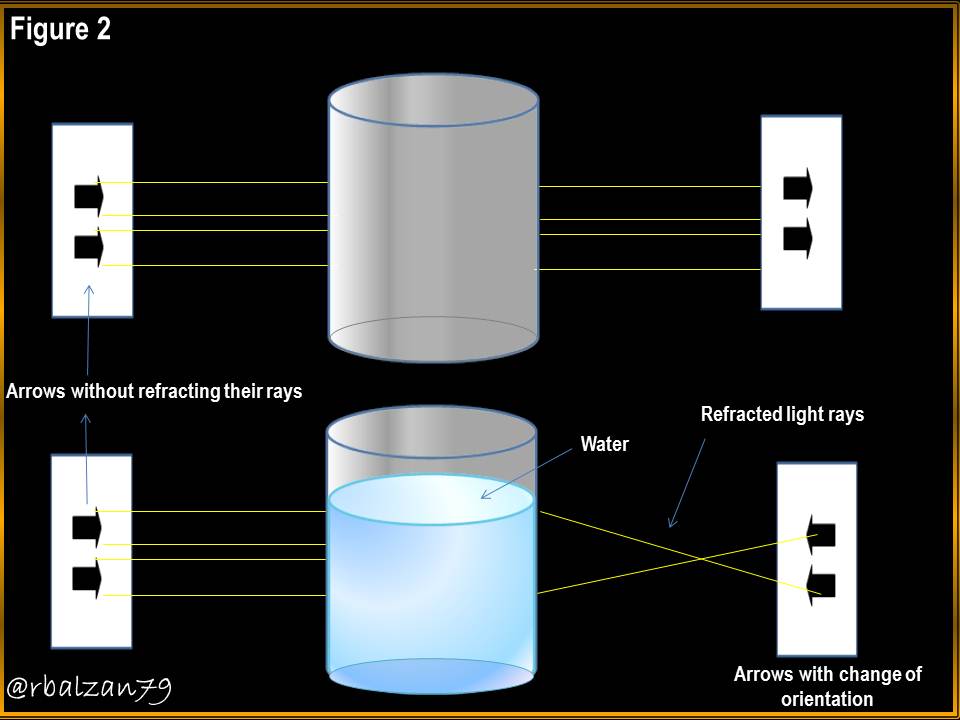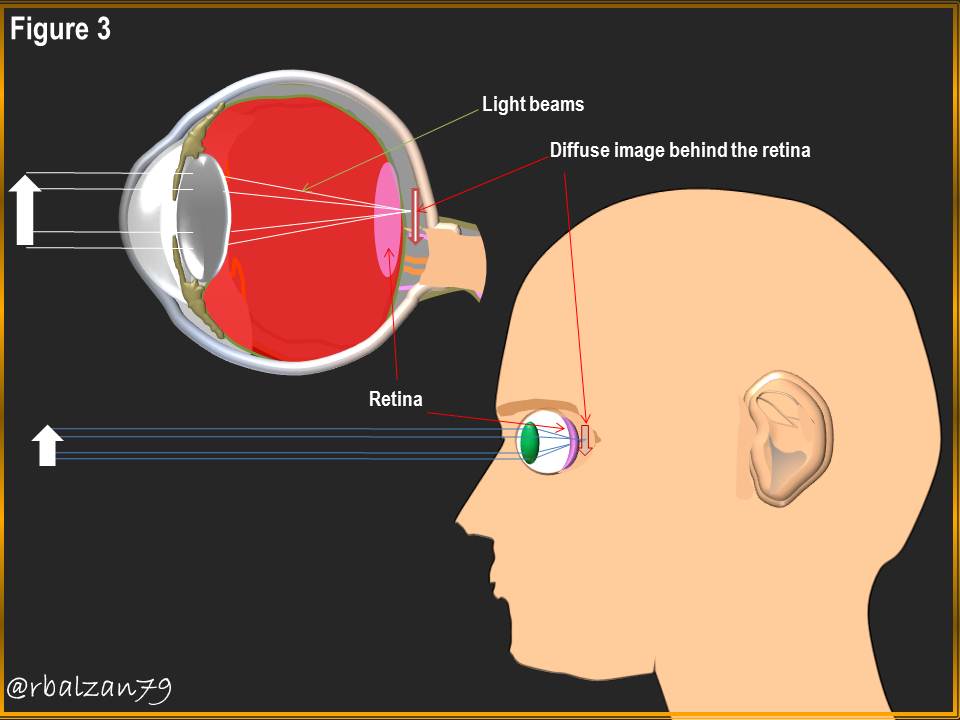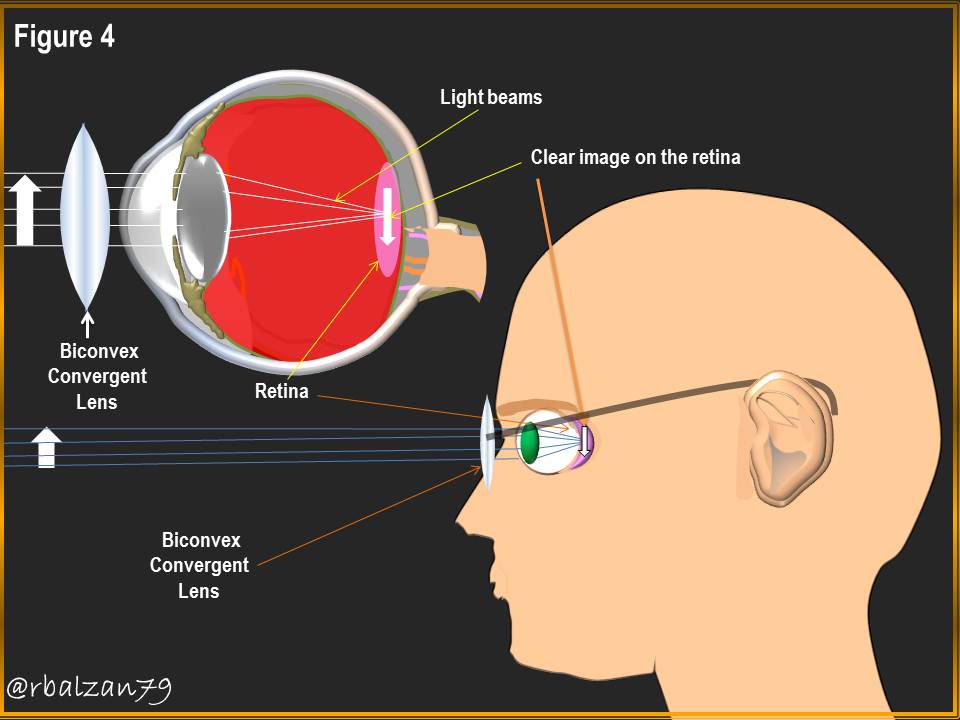The refractive power of our natural lenses_Part III (Hypermetropia)

Introduction
When we relate to the phenomenon of light we are undoubtedly linking ourselves with the referential fraction of the electromagnetic spectrum, and through it we have achieved the understanding of both the remains of electromagnetic radiation and everything that is around us.
From previous articles we have already been relating to the refractive power of certain materials such as lenses, both artificial and natural, through which the luminous rays transporting the images to our retina are propagated and this has led us to relate to the diopter or refractive power of the lenses of both artificial or natural origin as we had already expressed.
Of course my dear readers, it will always be of vital importance to keep in mind that the diopter is represented by the inverse value of the focal length in relation to a given optical system, also taking into account that the amount of diopter is proportional to the refractive power of certain lenses, that is, the higher the number of diopter, the higher the refractive power and vice versa.
There is no doubt that the eyes of any living species on this planet represent the most complex optical system that can exist in any space-time on this planet, and that is the reason for the great interest of mankind to know in detail its operation, since our eyes represent the means by which we can visualize our wonderful environment through the images carried by white light.
The light entering our natural optical systems (eyes) undergoes a series of refractions in order to focus in the best way the light rays on the retina, that is, in a convergent way, however, in some cases it does not happen this way, therefore, anomalies or ametropias develop as analyzed in the previous article as myopia, and this time we will do it with hyperopia.
Refraction of light rays, a practical example
To analyze the formation of images in our retinas we have to talk about the essential phenomenon of refraction of these light rays, that is why this time we will analyze a simple but didactic example that each of you can perform at home, therefore, then we will link to this example of refraction, and we will notice how the action of a material medium such as water manages to carry out the refraction of these rays achieving flip the image, as you will see in the following figure 1.

In the previous figure you could easily see the development of the phenomenon of refraction of the light rays emitted by our arrows, before placing the water (1) we observed the arrows with an orientation of their tips to the right, and as the surrounding medium is the air and the very thin glass of the container make very little effect (or nothing) of refraction, but everything changes when placing the water inside the container, where it was observed how the arrows are reversed.
The following figure 2 shows the behavior in terms of the change in directionality of the light rays analyzed above.

It is important to bear in mind that the refractive index is the ratio between the speed of light in a vacuum in relation to the speed that light rays may have in any other material or elastic medium, noting that in a vacuum this value will always be one (1), and as the medium to be traversed becomes denser this value increases, for example, in water it is 1.33.
Light rays in a hyperopic eye
As we have expressed in previous opportunities, light rays are responsible for transporting each image from the outside world to our retinas, but, before reaching the retina, they must pass through our natural lenses such as the cornea and crystalline lens, which refract them properly or not, thus indicating an emmetropic or ametropic optical system, respectively.
In relation to the above, we will analyze another ametropia such as hyperopia, therefore, we can begin by saying that it occurs when the light rays transporting the images are projected beyond our retina, that is, the opposite of myopia, where the light rays converge in front of the retina.
In a general way we can say that this type of ametropia originates due to a short or small eyeball, and with it, a smaller axial length than normal, however, we must also express that just like myopia, hyperopia can develop due to the refractive deficiency of the cornea and lens, hyperopia can develop due to the action of the refractive deficiency of the cornea and the crystalline lens, and this to an incorrect curvature leading it to be flatter than normal, the truth is that these luminous rays form a focal point beyond the retina, and thus causing blurred images.
The previous blurring of the luminous rays behind our retina can be seen in the following figure 3.

In the previous figure 3, you could clearly notice how the light rays generate a focal point behind the retina, and thus originating a blurred image, now my dear readers it is very important to witness how it is possible to accommodate the projection of these light rays to our retina and this can be seen in the following figure 4.

In the interesting figure 3 you could witness the correction of this ametropia with the implementation of biconvex positive (+) convergent artificial lenses and thus we can bring the focal point to the retina and thus giving sharpness to the images projected on our natural receiving screen.
Conclusion
Undoubtedly my dear readers, each one of us are reliable witnesses of the remarkable and essential action of the luminous rays that allow us to observe in a natural way our wonderful and charming environment, and as we know thanks to the light we have been able to know it in the best possible way.
The learnings obtained from our nature have allowed us to evolve in all senses and the learnings about light represent a clear example of the above mentioned, in relation to the subject raised in this opportunity we were able to carry out a practical example that allowed us to relate to the refractive power of the material medium such as water.
In this way, any material medium through which the luminous rays transporting images have to pass acts in this way, that is, each medium has its power to refract light and our ocular system does the same through the cornea and the crystalline lens, both responsible almost entirely for the refraction of the light rays that want to reach our retina.
The abnormal behavior of the refractive power of our natural lenses causes defocusing of the light rays in the lens, thus generating what we have called ametropias, which we have already related to myopia and now to hyperopia and its correction with the implementation of artificial lenses.
Until another opportunity my dear Hive readers, especially to the members of the great #stemsocial community, for which I highly recommend being part of this beautiful project, as it highlights the excellent work of academia and the great work of the scientific field.
Note: All images were created using the Power Point application, and the animated gif was created using the PhotoScape application, the photographic images were captured with the camera of the Samsung Galaxy J2 Pro cell phone.
Recommended Bibliographic References
[1]Myopia, Hyperopia and Astigmatism.
[2]Refractive power of lenses (Diopter). Author: @rbalzan79.
[3]Refractive power of lenses (Diopter)_Part II. Author: @rbalzan79.
[4]The refractive power of our natural lenses / Diopter of the human eye. Author: @rbalzan79.
[5] The refractive power of our natural lenses_Part II (Myopia). Autor: @rbalzan79.
Thanks for your contribution to the STEMsocial community. Feel free to join us on discord to get to know the rest of us!
Please consider delegating to the @stemsocial account (80% of the curation rewards are returned).
Please consider including @stemsocial as a beneficiary to get a stronger support.